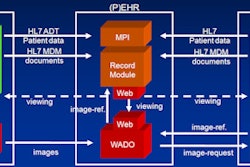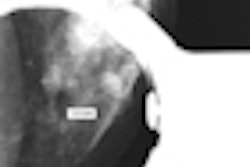Lagging ultrasound functionality available on PACS software has long been a sore point with many radiologists. And it remains so today, according to a recent survey that found that radiologists were less happy with ultrasound PACS functionality compared to users of other modalities.
In research presented at the 2010 American Institute of Ultrasound in Medicine (AIUM) annual meeting in San Diego, a Tennessee research team found that more than 40% of survey respondents rated overall ultrasound capabilities on their radiology PACS as either fair or poor. With the exception of nuclear medicine, ultrasound capabilities were rated significantly lower than other modalities.
"General radiology needs function well [in PACS]; ultrasound-specific needs function less well," said presenter Dr. Houston Graves, a second-year radiology resident at the University of Tennessee in Memphis.
While PACS has effected significant positive changes in all areas of radiology practice, ultrasound presents several unique issues. Exam quality is operator-dependent, and images that radiologists see are often only a sample of the study, Graves said.
In addition, image acquisition protocols vary, and examinations incorporate many measurements; 3D volume protocols are also proprietary.
"We feel that a more ultrasound-friendly PACS environment could solve some of these issues," he said.
In addition, the PACS database is a great potential resource for ultrasound teaching files for both practice improvement and academics, according to Graves. However, this functionality is limited, and patient data are not easily removable from images to ensure compliance with HIPAA regulations.
To investigate whether other radiologists were satisfied with the ultrasound capabilities on their general radiology PACS software, the researchers invited 1,000 members of the Society of Radiologists in Ultrasound (SRU) to take part in an Internet survey.
Of these, 161 responded; 112 (70%) were general radiology PACS users, 15 (9%) had a miniPACS, and 34 (21%) had a combination of miniPACS and general PACS. For the purposes of the study, only responses from general PACS users were included in the results.
The survey was designed to assess general radiology functions, such as fidelity for both color and black and white images, ease of measuring structures, accessibility of exams, ability to compare with other studies, and availability of images to other physicians. The respondents were also queried on ultrasound-specific capabilities, including cine clip capture and display, 3D volume acquisitions, image annotation capability, ability to rearrange image order, ability to capture measurements for structured reporting, ability to anonymize patient data, whether PACS improved diagnostic confidence, and teaching file functionality.
By modality, just 53% reported a high level of overall satisfaction with the ultrasound capabilities of their PACS, trailing CT (85%), x-ray (83%), and MRI (84%). Only satisfaction with nuclear medicine capabilities (46%) was rated lower.
Types of functionality radiologists said they wanted included or improved in their PACS encompassed:
- Cine clips (62%)
- Image annotation (48%)
- Volume acquisition (83%)
- Rearrangement of images (63%)
- Capturing of measurements (68%)
- Anonymizing patient data (61%)
Ratings of cine clip capabilities varied widely by vendor, Graves said. Also, 69% rated the ability to manage ultrasound teaching files as poor, as did 75% for the ability to save and find specific images/clips.
"A significant majority of radiologists would like to see improvement in teaching file functionality," he said.
In other findings, image presentation in PACS was rated as good or excellent by 92% of respondents for grayscale capability and 86% for color. Ease of measurement was also well regarded, with 82% rating it as good or excellent.
PACS was also found to contribute to an improved ultrasound work environment, with 100% praising immediate access to studies, 100% for comparison with previous or other images, 90% for communication with technologists, 95% for improved turnaround times, and 92% for availability of imaging to referring physicians, he said.
Overall satisfaction with ultrasound on general PACS lagged, however, Graves said. Radiologists desire improvements in ultrasound functionality; specifically, volume capture and manipulation, capture of measurements, image order rearrangement, and the capture and display of cine clips. They also want the ability to anonymize patient data and have teaching file functionality, he said.
By Erik L. Ridley
AuntMinnie.com staff writer
April 8, 2010
Related Reading
PACS, IT help meet changing ultrasound workflow requirements, April 23, 2007
Copyright © 2010 AuntMinnie.com




















